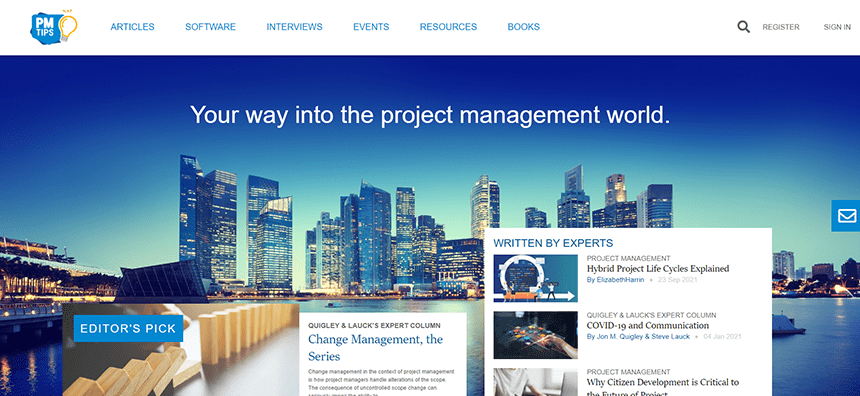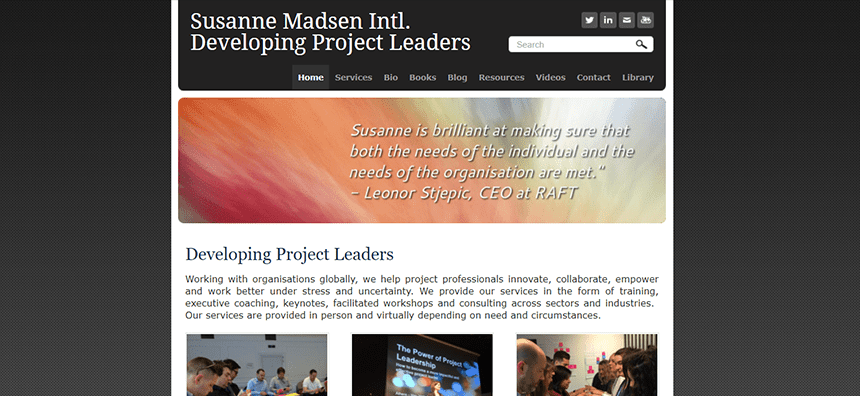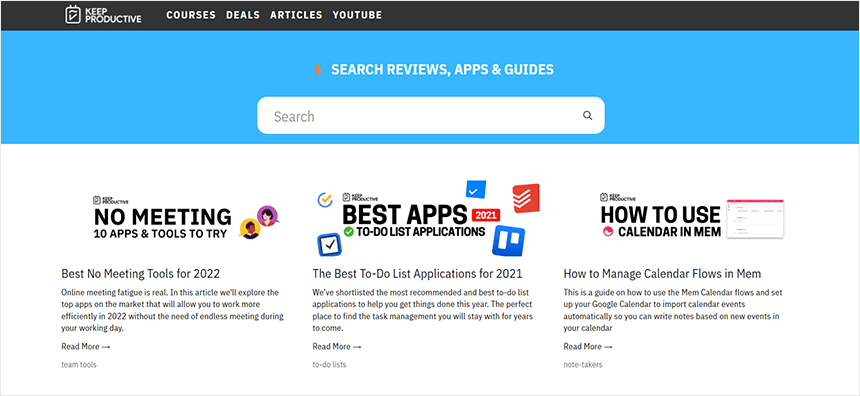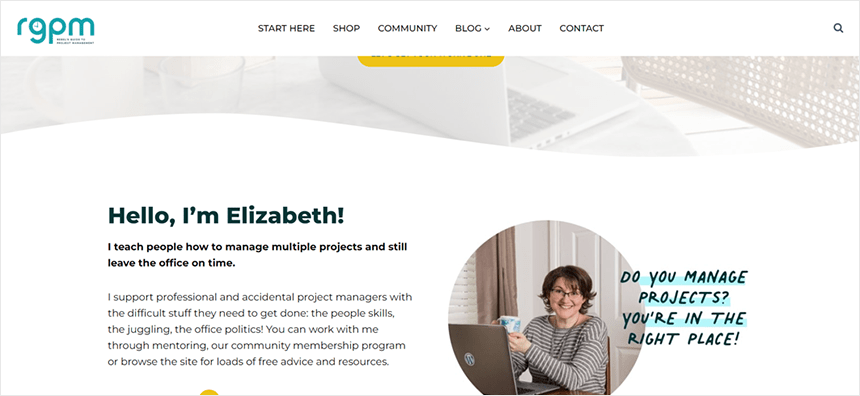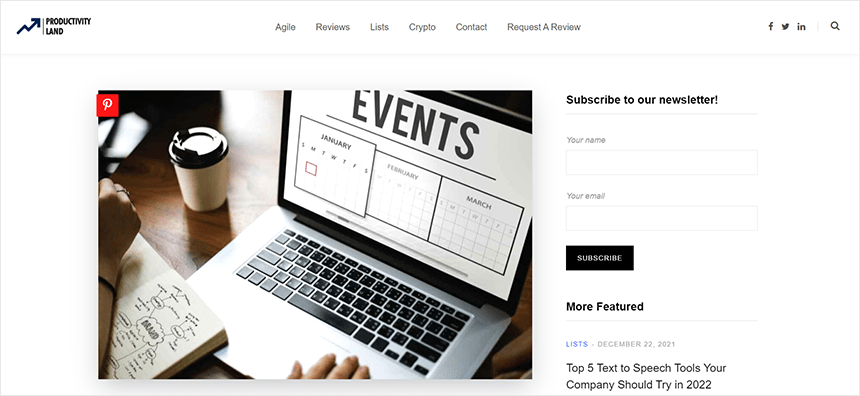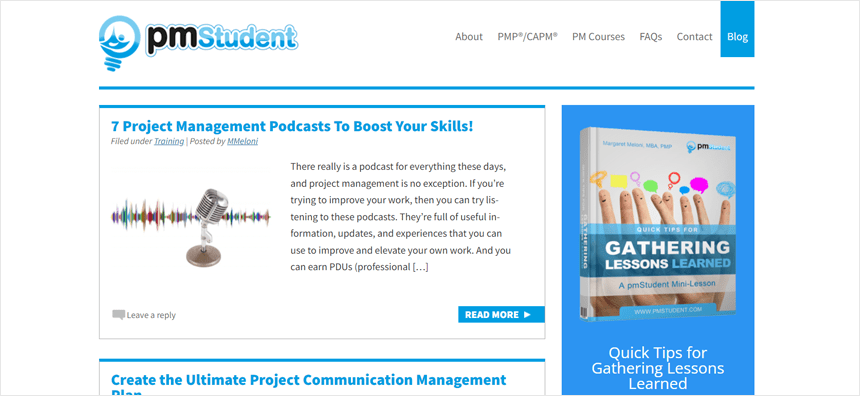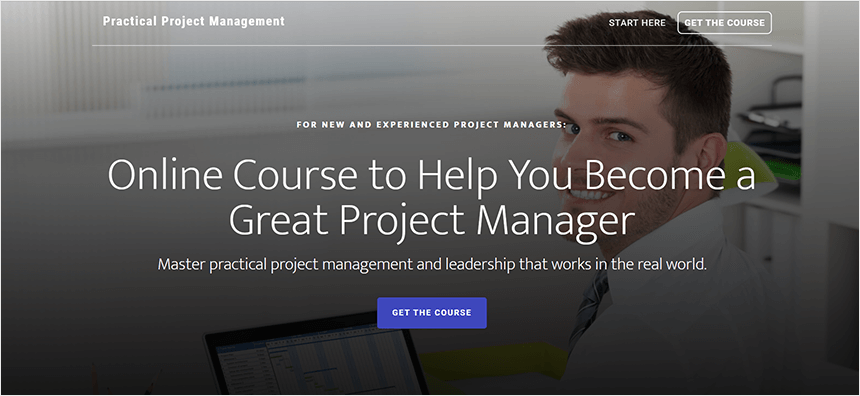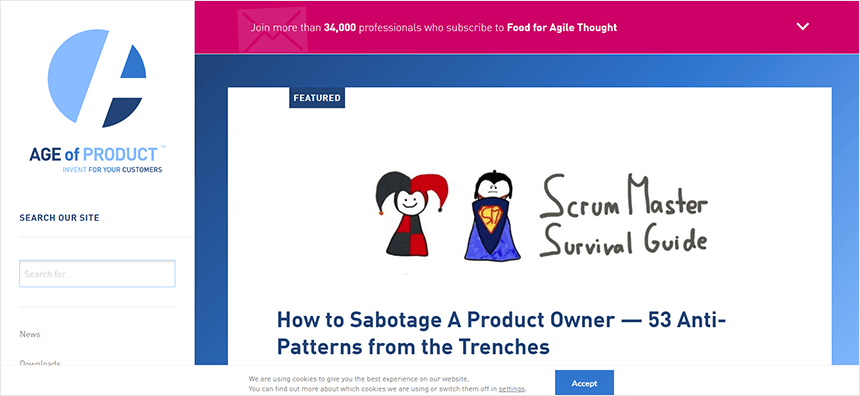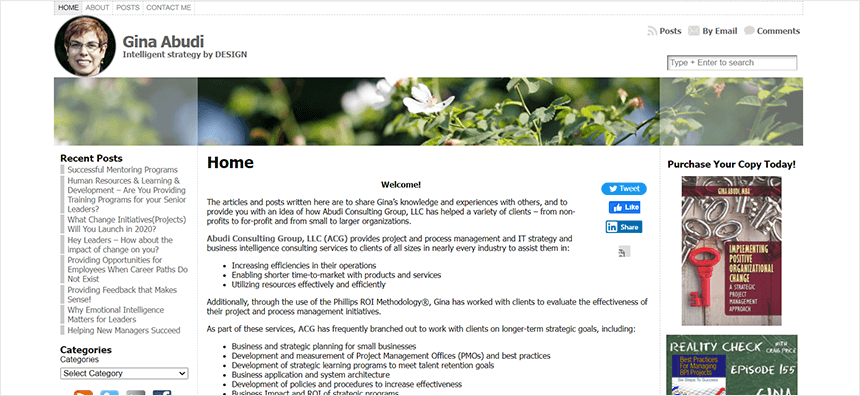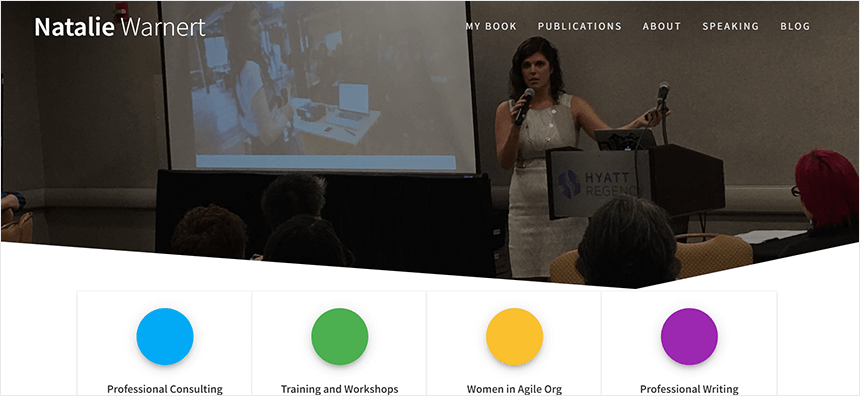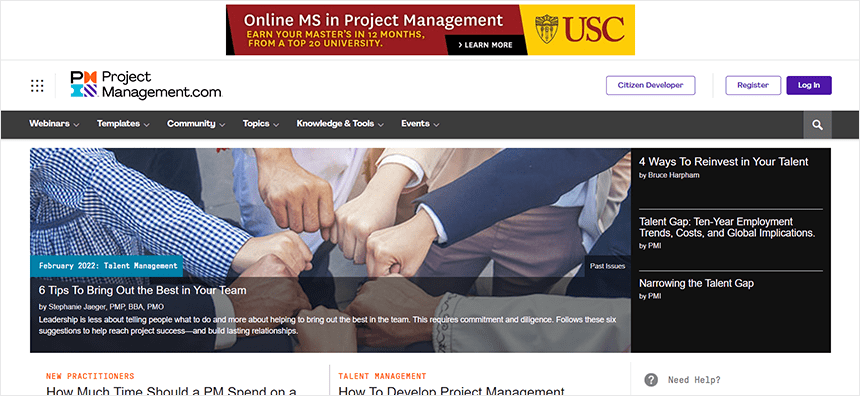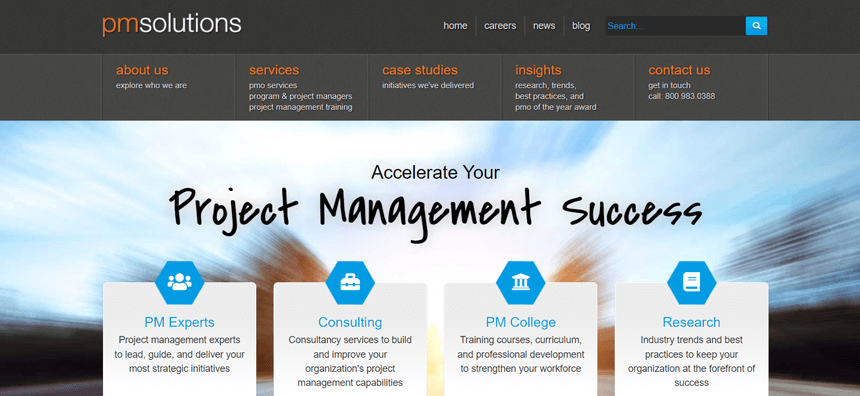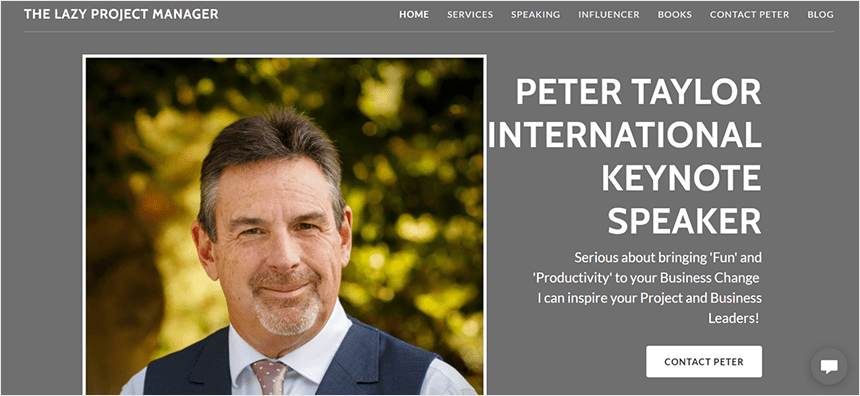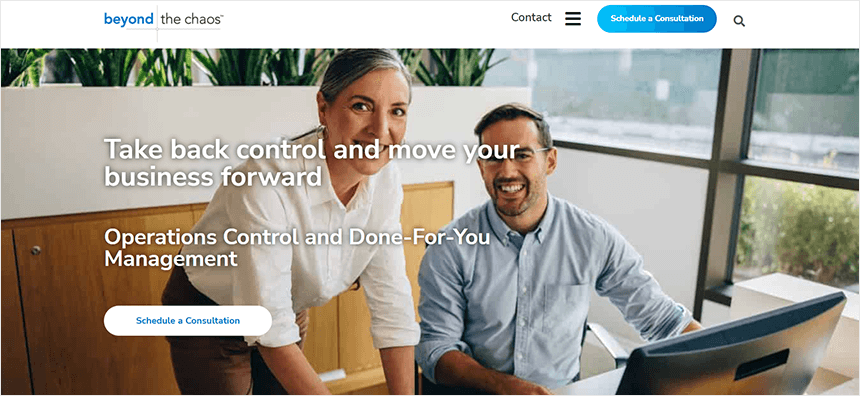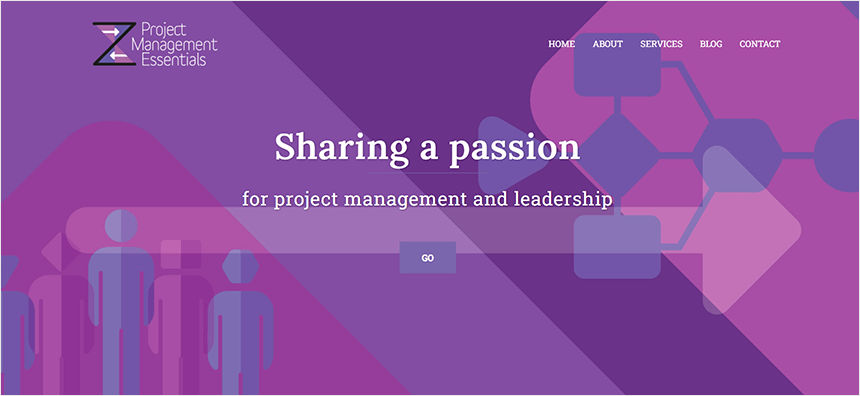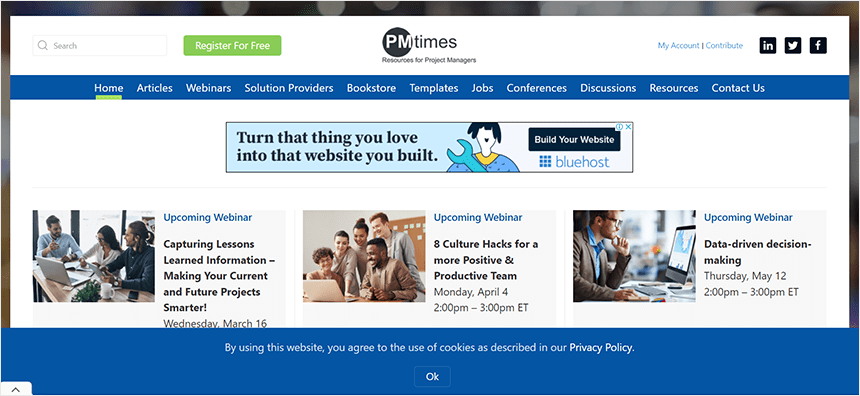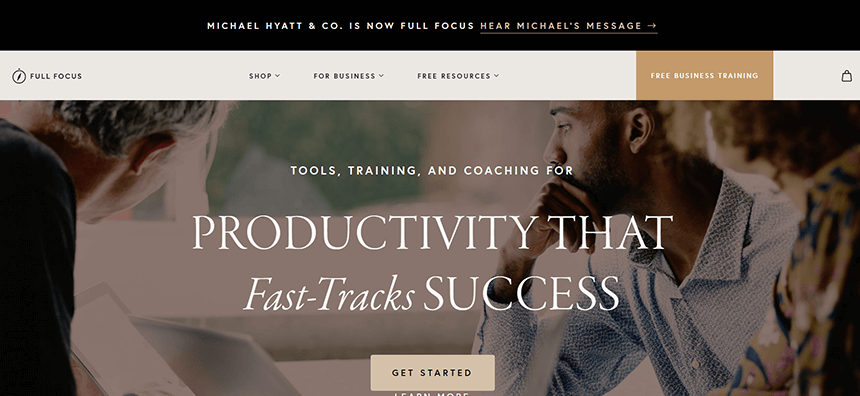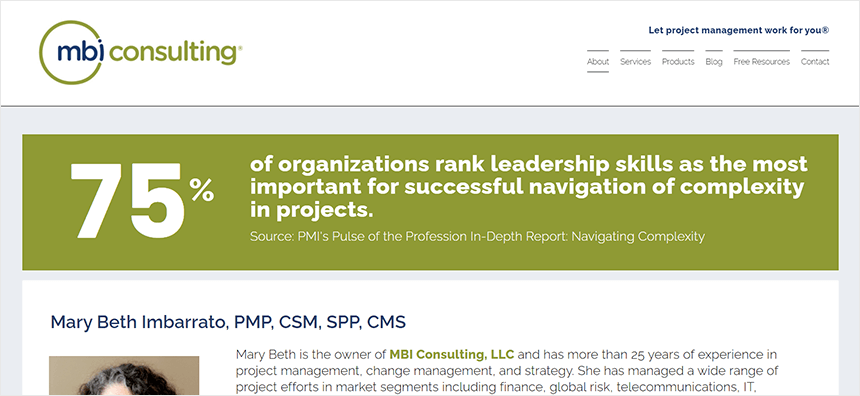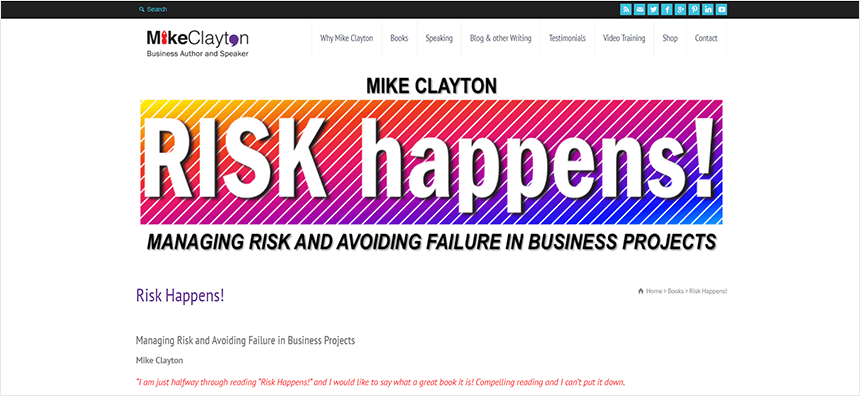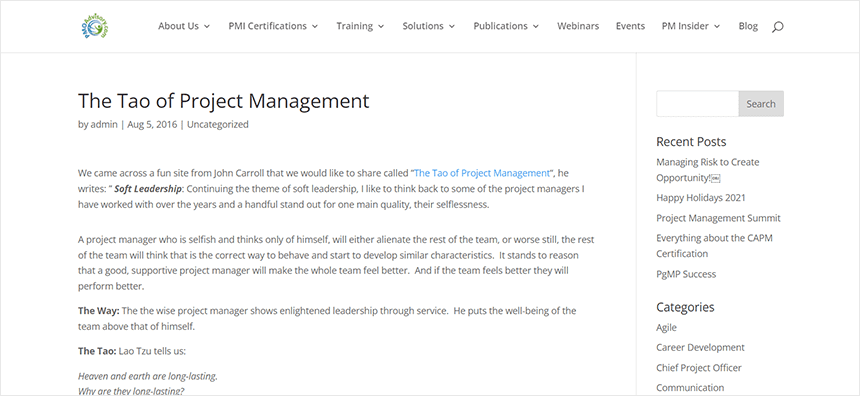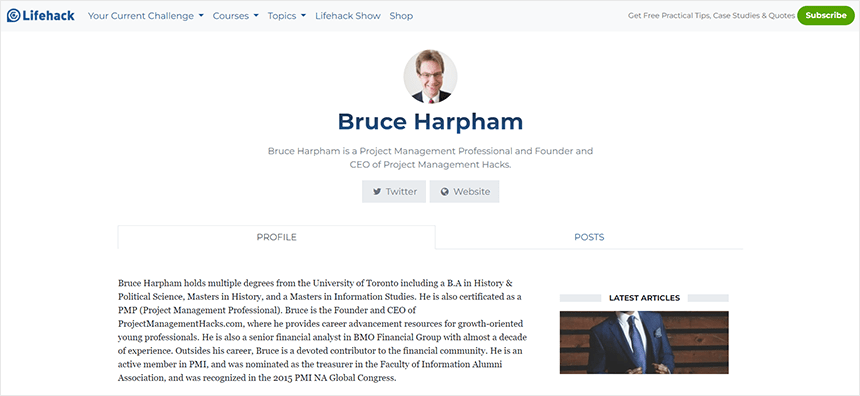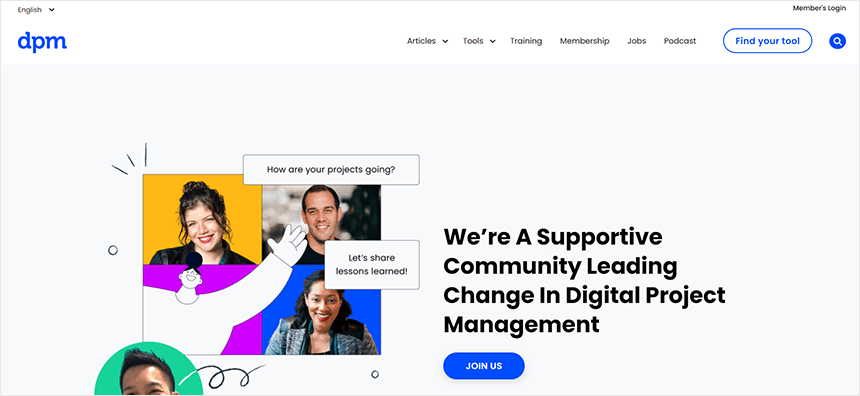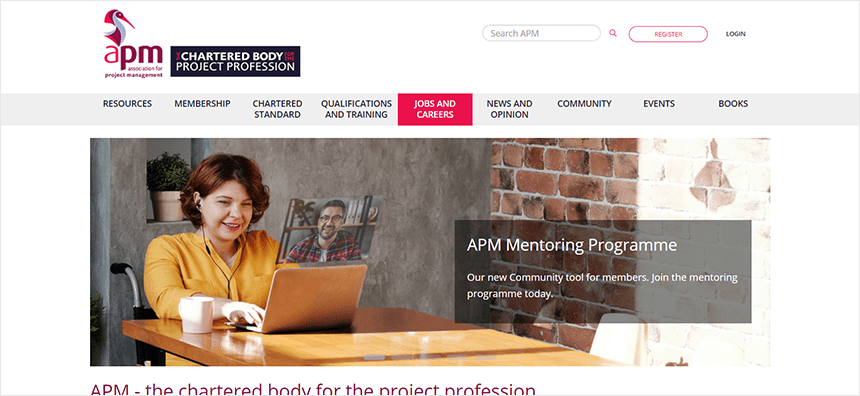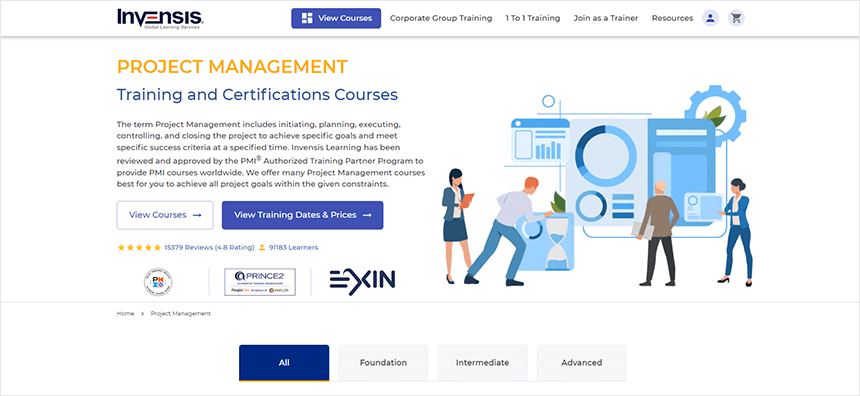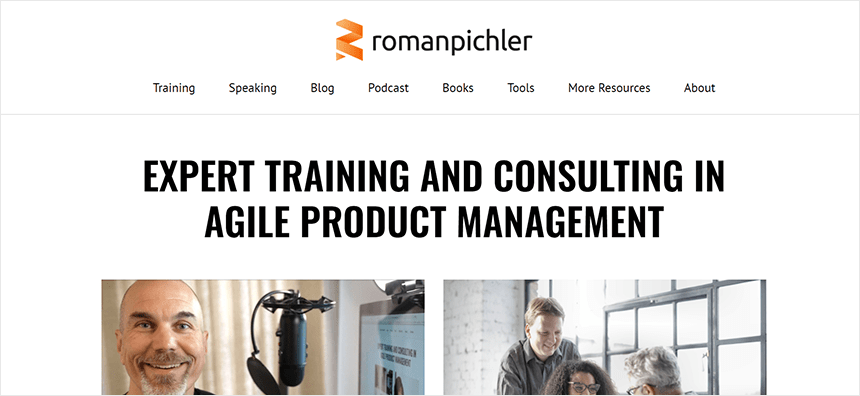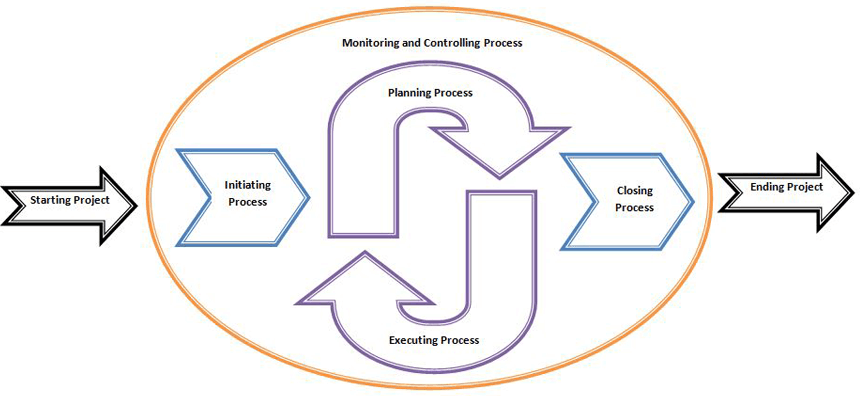In an ideal world, project managers put together a realistic timeline of project milestones that the whole team can complete with no changes to the deliverables during (or after) completion. However, as much as we prepare for any anticipated challenges along the way, project lifecycles never really go as planned, and the project manager is placed in a position to pivot direction, adjust schedules, communicate the updates with the team, redistribute workload, or even reset project expectations for everyone involved. With that many moving parts, it’s easy for scope creep to occur: the project evolves into something different from what it was originally.
Scope creep in project management happens frequently, especially if guardrails aren’t set in the beginning stages of the project with the customer. Changes during the project can cause major disruptions to workflow, with the team constantly asked to shift directions in order to achieve the requested outcome. This can inevitably cause inefficiencies, breakdowns, and delays in delivering a new project outcome.
However, there are ways to prevent this scenario from occurring. It’s important that project managers recognize what causes scope creep, how it can affect the work and the team, and how they can best manage scope creep when it happens.
Let’s first define scope as it relates to a project to better understand how we can apply this to project management.

What Is the Definition of Project Scope?
Project scope is an extensive planning process that involves some moving parts:
- Anticipated time a project will take to complete
- Timeline and estimation of resources approved by higher management/leadership
- Resources needed to ensure the project can be completed within expected standards
- Communication methods and initial team updates before rollout
- Tasks assigned to each team member to which they are responsible for fulfilling
Typically, a project manager orchestrates this entire process, carefully arranging timelines, working around schedules, and ensuring timely delivery of the project outcome. A project’s scope can also inform the project manager of any potential roadblocks or challenges that could impact the entire team.
Now that we understand project scope, let’s get into the definition of scope creep in project management.
What Is Scope Creep In Project Management?
To define scope creep in project management: it is when the requirements of the project exceedingly increase during the project’s lifecycle, resulting in changes to normal procedures or different deliverables than initially planned. This can throw a wrench into the timeline, resources, milestones, and intended project completion date as the team tries to navigate around the change requests.
Project managers need to be mindful of each new request as it comes in, ensuring that the changes are manageable and within scope. If not, a further discussion needs to be initiated in order to avoid the negative effects of scope creep and keep operations running smoothly.

What Are The Causes Of Scope Creep In Project Management?
There are a few reasons why scope creep in project management occurs:
- Little to no internal review of change requests – Scope creep can happen when the stakeholder’s change request to a project is not carefully reviewed by the project manager or other leadership. When this internal checkpoint is missed, the team carries on with added components to the project using the same amount of resources they originally started with. This can cause a variety of delays and setbacks, which in turn, can produce the need to have additional meetings to resolve the timing issues. While this prolonged process can be detrimental to the team when it occurs while a project is active (especially if the project manager or team lead cannot evenly distribute the workload), it can lead to productive conversations about the team’s limitations and the guardrails that need to be in place in order for scenarios like this to be avoided in the future. However, this is not an effective or proactive practice.
- No limitations – The importance of setting guardrails in the beginning stages of a project is paramount as it determines what the project is not. Similar to understanding the nature of the project and how it impacts the organization’s bottom line, so does the definition of what the project does not do. If no boundaries are established, this puts the project at risk for numerous unnecessary changes and can careen the entirety of the project out of scope. This can cause inefficiencies in the timeliness of meeting deadlines and delivery. No limitations can also impact your resources and stretch your team thin.
-
Ineffective communication to stakeholders and internal teams – Lack of communication is one of the common reasons why scope creep occurs in project management. This usually leads to two kinds of miscommunication issues:
- Communication with the team: Keeping the team up-to-date builds transparency and modifies expectations so there are no big surprises. However, if the team isn’t made aware of potential shifts to the project scope or is given the opportunity to provide feedback about their ability to handle the requests, this could prove disastrous for the project and any others happening simultaneously. Without valuable input from the team and a way for everyone to communicate with each other, the project won’t be set up for success.
- Communication with the stakeholder: Another key component of communication in project management is being clear with the stakeholder and outlining the team’s process for transparency. This is supplemented, in part, by having a solid understanding of the client and their expectations regarding updates, feedback, and final results. If the project manager or team lead cannot align the organization’s expectations against the client’s, there will be many opportunities for the project to turn into something else entirely.
- Evolving project requirements – The main driver behind scope creep in project management is consistent change requests from the stakeholder. This typically happens while the project is ongoing or after delivery. It’s normal to receive constructive feedback during the process, which can help with the overall quality of the product and the satisfaction of the consumer. After all, the goal is to produce a product or service in line with the stakeholder’s vision. However, there are situations where the number of requests can be drastic enough that the project manager will need further approvals to get the project moving in a different direction. Not only does this push out the timeline and cause disruption to the workflow, but it can also cause the leadership group to take a step back and reassess whether the project is in line with what the organization can accomplish given the nature of the requirements coming from the client. This can be an awkward process, leading to clarifying discussions with the stakeholder, who could be forced to withdraw from the process.
- No internal process management – Another reason why scope creep occurs in project management is the lack of an effective internal process. This could be due to a variety of reasons including:
-
- The organization is just getting started, which means internal procedures are still being realized.
- Standard operating procedures are not clear or consistent with current business practices.
- Lack of viable communication platforms that connect the whole team together.
- The absence of a robust project management system can help the project manager coordinate a pipeline for project completion.
- The leadership team is overwhelmed with their own workload and cannot actively contribute to the efficiencies of internal project workflows.
- Staff is overwhelmed with an uneven distribution of work and frequently bypass processes in order to meet deadlines.
- A talented project manager with the right skill set to organize various projects has yet to join the team.
There are numerous contributing factors as to why an organization’s internal process management may be inefficient. And they can certainly vary from long-term adjustments to quick fixes. But if unchecked, these can result in consistent scope creep, which can produce unwanted consequences.
- Inability to raise issues – Proactively raising issues before the start of the project can help avoid repercussions down the pipeline. Scope creep can often be a result of not raising potential issues (and subsequent solutions to these problems) during the initial stages of project implementation. When prospective challenges are brought up early, the team can have some additional time to brainstorm strategies, offer their proposed solutions to the client, align expectations, and save some precious time down the road.
Scope creep is typically a result of poor communication and a lack of guardrails. To protect the bottom line and the team, it’s important to understand how scope creep can impact your organization.

Effects of Scope Creep In Project Management (and how to prevent it!)
Scope creep in project management can have varying degrees of impact on your team and your organization’s output. Let’s take a look at some effects of scope creep.
-
Changes to the schedule – It’s common for changes in a project’s timeline to shift according to unexpected situations internally and externally. A well-informed, swift, and empathetic approach to decision-making on behalf of the project manager can lead to a gentle adjustment to the timeline, while still meeting milestones in a realistic manner. However, there’s a point where changes to the schedule can often delay the production workflow, causing a whole restructuring of the project’s timeline and a shift in resources. For example, a stakeholder decides to introduce their own team to the intended deliverable by the end of the week. While the expediency of project completion was not anticipated, the resources at your organization are able to meet this deadline. After the team has achieved this and submitted the intended product, the stakeholder takes longer than expected to provide relevant feedback to see if it has met expectations. After a few follow-ups, which has already caused multiple shifts in the timeline, the stakeholder finally responds past the time their feedback was due that they would like to make some adjustments by a certain date. This triggers a variety of action items for the project manager:
- Review of the timeline to see if the request is manageable
- Update to the team regarding feedback and potential next steps
- A potential meeting with relevant leadership to discuss next steps moving forward
- If approved, dates adjusted to accommodate and changes reflected for team members to see
- Team members pulled in to meet the deadline
- Update client that deadline can be met, but with guardrails in place moving forward
Changes in the schedule can cause a ripple effect that reverberates across the whole team. The project manager puts in additional work to reorganize and construct a new timeline based on late feedback from the client. Accommodating this request can be considered out of scope for the project, leading to higher levels of stress for the staff.
- Increased costs – Scope creep can also heavily impact the organization’s budget. If a stakeholder adds more requirements or changes the nature of the project mid-way, the organization is likely to go over budget. For example, let’s say a client decides they wanted one service at the start of the project. Then halfway through completion, the client comes back to the project manager and says they need an additional three services added to their package. Not only does this drastically increase the scope of the project, but it also forces the team to see if they have the resources available to meet this change. Additionally, the costs also extend to the employee’s time. Likely, as the project evolves because of scope creep, the staff will need to spend extra time working on the new requests, resulting in more hours worked than what was originally intended. This can result in an increase in paid hours and overtime.
-
Resource allocation – One of the effects of scope creep involves the availability of required resources. If the scope of the project were to change exponentially, the resources needed to implement the request may not be sufficient at the time. So the project’s change could potentially max out your resources. This poses a huge problem in project management as resource allocation and resource leveling are two important techniques that keep a project’s momentum moving in a positive direction, using appropriate resources equally without over or under-scheduling available resources. Resources would include factors such as:
- Identification and availability of talent
- Assessment of workloads across the team
- Processes installed to help facilitate successful project completion
- Clear communication channels and platforms
- Software to streamline processes and carry out the efficiency of production
- The available budget for the project
- Accessible materials such as physical or virtual space needed for operations
Balancing all these components in project management takes a fair amount of organization and forward-thinking, but scope creep has the potential to completely off-balance the team and the production schedule, ultimately affecting morale and the quality of the final project.

-
Team burnout – Burnout is an unintended effect of scope creep that can slowly chip away at your staff’s morale. If improperly managed, scope creep can cause your team to burn out quickly. Frequent change requests can lead to confusion, frustration, and overwhelm with your team, 3 emotions that can heavily impact your staff’s desire to continue with the organization for the long term. According to the APA, American workers alone saw a heightened rate of burnout in 2021. The APA’s 2021 Work and Well-beibng Survey of 1,501 adult workers revealed that 79% of employees experienced work-related stress months before the survey was conducted. 3 in 5 employees have disclosed that work-related stress caused a lack of motivation, energy, and interest with even more participants agreeing that they’ve experienced physical and cognitive fatigue.
These are alarming statistics among the workforce, and scope creep can contribute to the risk of burnout as it’s an added level of stress that negatively impacts your employees.
- Unaligned expectations – Scope creep can also produce negative experiences between the organization and its stakeholders, possibly affecting any future working (or collaborative) relationship. When scope creep occurs, it’s often because of mismatching expectations of the process and the final outcome. This usually is a result of incomplete communication in the initial stages of planning and not being clear with the organization’s processes. The stakeholder needs to have a high-level understanding of the steps that go into the final product or service and what components are considered outside of the project scope (normally, anything outside the original package could be considered as add-ons for additional fees). If expectations are not aligned in the beginning, the effects of the miscommunication will frequently present themselves mid-project.
The effects of scope creep can be tremendous in the workplace, even if it’s not immediate. It’s important that a highly skilled project manager is at the helm throughout the project’s lifecycle to ensure the team has the best chance of success and can realistically (and professionally) pivot around certain demands outside the original project scope. This allows for more creative problem-solving and flexibility when it comes to change requests.

How To Avoid Scope Creep In Project Management
So how can a project manager effectively determine a project’s scope to make the best decisions for the staff while avoiding scope creep? Here are seven ways to prevent scope creep:
1. Know what you need to get done – The first step in determining a project’s scope is a firm understanding of what the project needs to accomplish and who it will impact:
- How will this project impact the organization?
- Is the project realistic for our organization to achieve?
- Is this project in line with our mission, policies, and core values?
- What are the stakeholder’s expectations of the process and final delivery?
- Who needs to be involved in order to meet these expectations?
- Do we need buy-in from our leadership team?
These are all important questions that initiate the process of effective project management and will give firm insights into whether the project’s scope is within the organization’s purview.
2. Set guardrails – Setting boundaries within the project’s scope is also a significant part of avoiding scope creep in project management. This usually happens during the initial stages of project implementation, where either the project manager or leadership outlines the steps of the project and ensures that the stakeholder understands this process. Of course, situations can arise midway through a project that causes the client to reassess their needs. This happens quite frequently, but it’s one of the essential functions of the project manager to vet the requests that are within the boundaries of the project and ones that fall out of scope. Setting guardrails is one of the most important steps a project manager can take in protecting the team’s (and the organization’s) time and resources. So when can you go about setting guardrails before (and during) a project?
- Planning stage – The planning stage is where the project manager considers the requirements of the project, who needs to be involved in its completion, and any budget constraints. Once the project manager has defined the perimeters of the project, it’ll be easier to identify what components are necessary to the project. This can then provide sufficient information to present to the stakeholder regarding deadlines, points of contact, feedback procedures, and deliverables.
- Initial call with the stakeholder – This is an opportunity to get on the same page as the stakeholder and reveal relevant processes so that expectations can be set early. This avoids having to have tougher conversations midway through a project, which can impact the pacing of the work being done. It’s important to have initial calls/meetings to discuss these details and give an opportunity for questions or concerns.
- During project lifecycle – As the project moves through its milestones, different requests can come through which the project manager needs to carefully review to make sure that it’s within scope. If there are too many requests and the project is starting to look like it’ll need significant revision and resources for such a change are limited, guardrails need to be put in place to gently remind the stakeholder of the process and what the organization is able to offer. These can be uncomfortable discussions to have, but necessary ones as they can impact the team and the organization’s resources.
-
Align expectations within the team early- It’s also important to set expectations for the core team in the beginning as well. Every participant in the project needs to fully understand their role in the project, embrace their responsibilities and the impact it has on each other’s work. This prevents duplication of efforts and unfair workloads. For example, you could potentially come across scenarios where the team is not clear on their contributions to the project. This could be due to a variety of reasons ranging from miscommunication or unclear role expectations. When the team isn’t clear, it can cause a multitude of issues:
- Missed deadlines
- Delayed delivery of the project
- Incomplete work
- Uneven workloads
- Poor quality output
- Mistrust and frustration amongst the team
- Staff working outside their essential functions and taking on additional work to get the project moving
Aligning the team is just as critical as clearly outlining expectations with a stakeholder in order to avoid scope creep in project management.
3. Understand the order of steps that need to happen – A fundamental understanding of the process needs to occur for the project to reach its finish line and avoid scope creep. This means knowing the steps required in order for the project to be deemed complete. In addition to the order of steps, there also needs to be a review of the priority level of each one to determine the sequence of tasks. These two essential pieces are the foundation of the project’s structure and timeline, creating an order of events and dependencies that the team will need to complete in order to have all the necessary components of the project. The project manager will also need to take into account the estimated budget and the availability of resources before the start of the process.
4. Get it in writing – Whether it’s with a stakeholder or the team itself, it’s important to get expectations down in writing before the start of the project to avoid scope creep. This step protects the team’s processes and efforts and helps align expectations moving forward.
- For the stakeholder: Receiving written next steps and overviews help set the stage for the stakeholder, providing them clarity and opportunities to ask questions early on in the process before implementation. If change requests from the stakeholder start to come in, the project management (with approval from the leadership team) can then decide what decisions are appropriate or if guardrails need to be put in place. Having documentation supports the entire team and protects their time.
- For the team: Processes should also be documented. Commonly, most organizations defer to their standard operating procedures or any other official outlines to help guide them through different processes. This is especially helpful for new members of the team and can act as a quick refresher for those who’ve been with the organization for a while. Having documentation for internal processes helps avoid scope creep by providing clear instructions on who should be involved, anticipated timelines, and definition of responsibilities. These practices should be frequently updated and reviewed to make sure that they comply with the latest operations from the team based on previous success and past mistakes, implementing the most effective strategies that produced the best outcomes.

5. Communicate, communicate, communicate – Communication with both the stakeholder and the team is one of the most important ways to avoid scope creep in project management. Without updating the relevant individuals in a timely manner, this opens up the possibility of miscommunication, assumptions, and unexpected challenges. Communication channels that have established ways of syncing the team together should be one of the organization’s top priorities to utilize. Communication is important to keeping everyone feeling comfortable, making sure that the team (and stakeholders) feel heard and understood. This involves a high level of active listening in order to have productive discussions.
6. Establish clear milestones and deadlines – Another way to avoid scope creep in project management is to have clear milestones and deadlines that everyone has access to. That’s why it’s important to use project management software that connects the team together and ensures seamless communication. This keeps the project on track and gives the project manager an opportunity to see the status of the project as a whole, making it easier to be flexible or work in any changes. Charting out the planned deadlines and sending out gentle, yet regular reminders of upcoming due dates can help keep the process moving. If there are any delays, the project deadline could be extended so long as the team and the stakeholder are kept up to speed.
7. Get the right people in the right seats – As the project manager reviews the project’s resources and team availability, they must also make sure they have the right people in the right roles according to their skill sets. The necessary skills and expertise will naturally be assigned according to what’s needed. It’s important to keep the team up-to-date on their training if needed to avoid any delays caused internally. To improve efficiencies, the team must also possess considerable adaptability and flexibility in their approach to assignments. Project scope can change rapidly, and while the project manager can shield the team to an extent, the team must be able to adjust and propose solutions as well. This can take considerable review of resources and availability so as to not interrupt the pace of the project, but when the right talent is involved, the process will be smoother and less cumbersome.
Moving through these steps will help a project manager work through the more complex aspects of project management. This is an essential foundation for any project’s success.
In Conclusion
Scope creep in project management can be detrimental to the project’s final outcome. In many ways, it can also affect your team by lowering motivation and morale. Luckily, there are ways to stay proactive and protect the team’s time and resources. Regular communication and efficient internal procedures can help you to establish healthy practices that benefit the whole team.
Understanding how to avoid scope creep in project management will help you establish transparency in the workplace, up-to-date processes that work for both the organization and the stakeholder, and make project completion so much easier.



